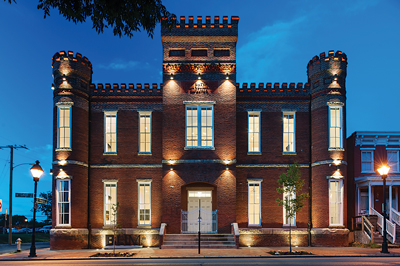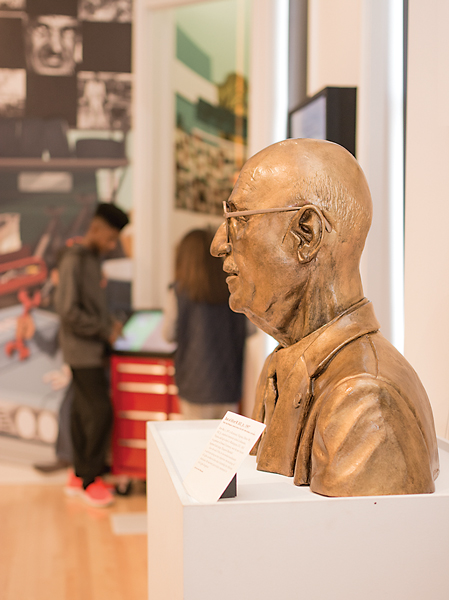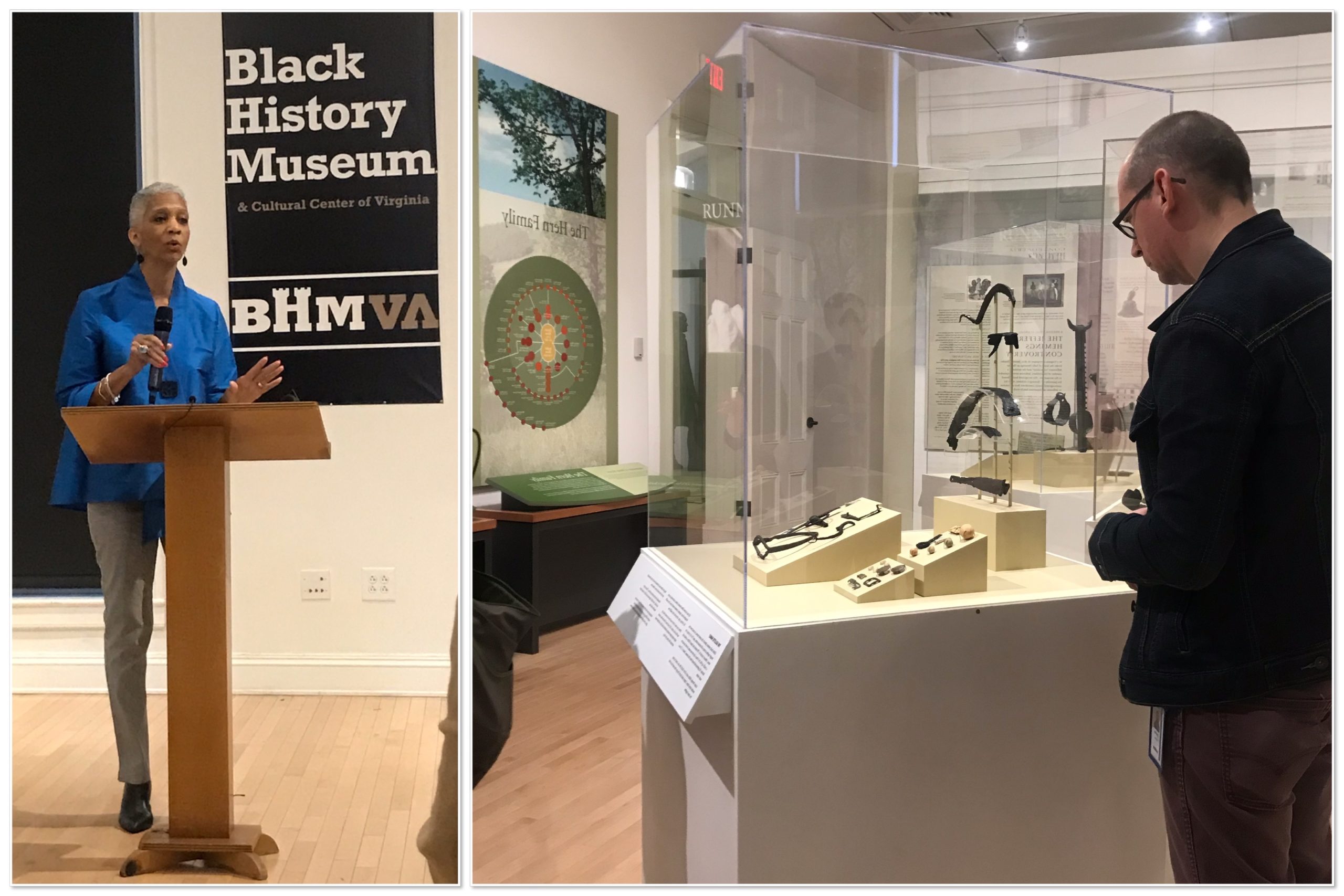Shhhhh! is a sound rarely heard at the Black History Museum and Cultural Center of Virginia. Oohs, aahs, and squeals of laughter are more like it at the museum that encourages guests of all ages to explore history through touch-screen exhibitions, interactive games, docent storytelling, and a quiz that’s full of historical surprises.
Certainly, many Americans are familiar with Harriet Tubman leading enslaved people to freedom, Rosa Parks refusing to sit in the back of the bus, and Martin Luther King’s famous March on Washington, but there are more stories of African American history and culture to be shared, some obscure and some buried. Although Virginia’s past is sometimes painful, the BHMVA lives its mission by preserving stories that inspire, while focusing on the courage, resilience, strength, and fortitude of African Americans who have made important contributions to Richmond, the nation, and the world.
 Conceptualized in 1981, the BHMVA was the brainchild of Carroll W. Anderson, Sr., who wrote that he wanted Richmond to have “a historical site in favor of black people.” A native Virginian, Anderson was an advocate and reformer who championed opportunities for blacks all of his life. In 1988, the City of Richmond presented Anderson with the keys to Dill House at 00 Clay Street, formerly the Rosa D. Bowser Branch of the Richmond Public Library for African Americans, named in honor of the first black female school teacher in Richmond. After successful fundraising efforts yielded support from community members and local businesses, the original museum opened there to the public in 1991. “Anderson died that same year, but his spirit lives on,” says BHMVA Executive Director Adele Johnson.
Conceptualized in 1981, the BHMVA was the brainchild of Carroll W. Anderson, Sr., who wrote that he wanted Richmond to have “a historical site in favor of black people.” A native Virginian, Anderson was an advocate and reformer who championed opportunities for blacks all of his life. In 1988, the City of Richmond presented Anderson with the keys to Dill House at 00 Clay Street, formerly the Rosa D. Bowser Branch of the Richmond Public Library for African Americans, named in honor of the first black female school teacher in Richmond. After successful fundraising efforts yielded support from community members and local businesses, the original museum opened there to the public in 1991. “Anderson died that same year, but his spirit lives on,” says BHMVA Executive Director Adele Johnson.
In 2016, the BHMVA moved to its current home, four blocks away at the Leigh Street Armory. While the building’s exterior upholds its original 1895 prominence, its modern interior is inviting and spacious and serves as a bridge between past and future.
The museum’s first floor permanent exhibitions present critical stories and artifacts detailing the eras of Emancipation, Reconstruction, Jim Crow, Desegregation, Massive Resistance, and the Civil Rights movement. “One of the most
captivating areas is a 35-foot long digital timeline of significant dates augmented by incredible photographs,” says Johnson.
Exhibitions like the simulated speedway featuring Wendell Scott, the first black NASCAR winner, and the financial literacy games highlighting WW Browne, an early leader who chartered the first black financial institution in the United States, provide interactive fun designed especially for young visitors. Among the historic exhibits, there are two prominent contemporary pieces. The 13-foot likeness of Arthur Ashe commands attention as the model for the Monument Avenue statue that was erected in 1996. The 600-pound figure commemorates the only African American male to win three grand slams. Second, the floor-to-ceiling sculptural representation of the Emancipation Oak at Hampton University pays tribute to the site of the first southern reading of the Emancipation Proclamation in 1863.

The second-floor galleries of the facility are reserved for traveling exhibitions and community partnerships, and typically present three distinctly different aspects of history and art. According to Johnson, this January, the largest exhibition the museum has hosted will consume these galleries when The Paradox of Liberty: Slavery at Jefferson’s Monticello opens to the public.
This exhibition tells the story of Monticello by highlighting experiences and perspectives of Sally Hemings and other enslaved individuals. The exhibit includes 300-plus objects, photographs, text panels, and multi-media displays.
Johnson says this perspective is important because history is typically written by the people in power. “Where most historical exhibitions speak from Thomas Jefferson’s viewpoint,” says Johnson, “this one gives voice to the many enslaved families who built and maintained Monticello.”
Throughout the year, the BHMVA offers family and children’s programming – arts opportunities, scavenger hunts, historical portrayals, and humorous contests to ensure a fun learning experience. In addition, an annual Children’s Book Festival in May invites 600 second graders from Richmond-area public schools to participate in interactive sessions with celebrity authors.
Freedom Friday, the first Friday of each month March through November, encourages museum visitation by spotlighting local talent. “There is free entertainment and no admission between 5 p.m. and 8 p.m. on these days,” says Johnson. “It has become a favorite, featuring live jazz, wine, and wings.”
Johnson says the exhibitions at the BHMVA are both inspirational and educational. “Every day, there is a new opportunity to share African American history with the community in a context that opens minds and hearts,” says Johnson. “I want to see families of all races and ethnicities come through our doors. African American history is American history, and we present it in a manner that’s welcoming for all.”

photos: Ansel Olson, Jackie Merritt, courtesy Black History Museum




